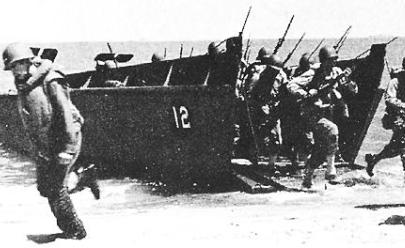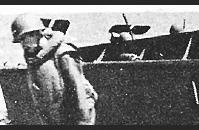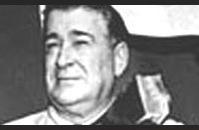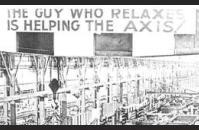HIGGINS BOATS AT A GLANCE:

Image Gallery
New Orleans: Home of the Higgins Boats
To win the war, the United States and its allies had to develop tactics and equipment to launch massive amphibious landings at sites ranging from Pacific atolls to the French coastline. The city of New Orleans made a unique contribution to this critical part of America’s war effort.
New Orleans was home to Higgins Industries, a small boat company owned by the flamboyant entrepreneur Andrew Jackson Higgins. Higgins designed and produced a unique and ingenious collection of amphibious boats capable of delivering masses of men and equipment safely and efficiently from ship to shore, eliminating the need for established harbors. His craft included amphibious LCTs, LCPLs, and LCMs along with PT boats, supply vessels, and other specialized craft. But he is best known for designing and manufacturing thousands of LCVPs (Land Craft, Vehicle, Personnel), special craft designed to carry infantry platoons and jeeps to shore. Higgins boats were used in every major American amphibious operation in the European and Pacific theaters, including D-Day in Normandy. Indeed, they were crucial to the success of those operations.
Higgins initially had difficulty getting the attention of the military. But with persistence and a superior product, he was soon competing with the more established shipyards of the Northeast. Higgins’ designs won him huge government contracts and his tiny business expanded dramatically. In 1938, he operated a single boatyard employing less than 75 workers. By late 1943, his seven plants employed more than 25,000 workers. The Higgins workforce was the first in New Orleans to be racially integrated. His employees included whites, blacks, men, women, seniors, and people with disabilities. All were paid equal wages according to their job functions. They responded by shattering production records, turning out more than 20,000 boats—12,500 of them LCVPs—by the end of the war.
During the war, Higgins’ name became indelibly tied to his landing craft. Men did not come ashore in LCVPs, they traveled in “Higgins boats.” His achievements earned him countless accolades, but none was greater than the one he received from General Eisenhower. Higgins, Eisenhower said years later, “won the war for us.”
The National WWII Museum displays a reproduction of a Higgins LCVP in its Louisiana Memorial Pavilion. This Higgins Boat was built from original plans entirely by volunteers—several of whom worked for Higgins Industries during World War II. The Museum also displays a WWII-era LCP (L) (Landing Craft Personnel, Large), an earlier version of the LCVP that did not include a forward ramp.
Download a printable version of this At A Glance
TAKE ACTION:


EDUCATION PROJECTS:
Student Travel – WWII Educational Tours
High school and college students, learn the leadership principles that helped win WWII on a trip to France or during a weeklong residential program in New Orleans. College credit is available, and space is limited.
See You Next Year! HS Yearbooks from WWII
Collected from across the United States, the words and pictures of these yearbooks present a new opportunity to experience the many challenges, setbacks and triumphs of the war through the eyes of America’s youth.
The Victory Gardens of WWII
Visit the Classroom Victory Garden Project website to learn about food production during WWII, find lesson plans and activities for elementary students, get tips for starting your own garden and try out simple Victory Garden recipes!
The Science and Technology of WWII
Visit our new interactive website to learn about wartime technical and scientific advances that forever changed our world. Incorporates STEM principles to use in the classroom.
Kids Corner: Fun and Games!
Make your own propaganda posters, test your memory, solve puzzles and more! Learn about World War II and have fun at the same time.






